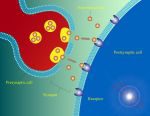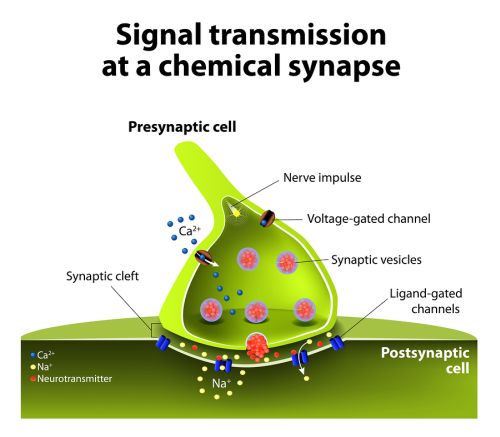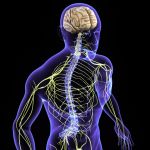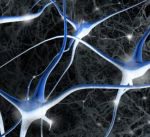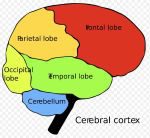Neurotransmitters come in several classes and categories. If you are wondering, “What are the neurotransmitters?” then this article is for you!
What Is A Neurotransmitter?
A Neurotransmitter is a chemical messenger. In other words, whenever neurons or cells in your body communicate, they do so through transmission of a chemical (or chemicals) that are sent from one neuron (known as the presynaptic neuron) to another neuron (known as the postsynaptic neuron.) Neurotransmitters typically originate within the organism, tissue or cell, which means that they are endogenous in nature. For more about neurons, click here.
What is Neurotransmission?
The process through which these chemical messages are sent is called Neurotransmission. This means that the presynaptic neuron is sending chemical (signal) messages that will bind and activate the receptors of another postsynaptic neuron. Whether or not this chemical is released to the postsynaptic neuron depends on whether or not a threshold has been reached. When that threshold has been met, this is known as the action potential.
Two Ways A Neurotransmitter Influences A Postsynaptic Neuron:
There are two ways that a neurotransmitter will influence the postsynaptic neuron. One is that it will inhibit changes (neuron will not fire) and it is further away from the threshold. The other is that it will excite changes (neuron will fire) and it is closer to the threshold. Neurons are able to form elaborate neural networks by which the action potentials (or nerve impulses) travel.
How Do Neurons Communicate?
Each individual neuron has approximately 15000 connections with other neurons. However, neurons do not touch each other but instead, they interact through synapses through very close contact with one another. The action potential is how the neuron transports information to another neuron.
When a nerve impulse arrives at the synapse – it releases a neurotransmitter which influences the postsynaptic neuron. How likely it is that a neuron will fire depends on how far the membrane potential is from the threshold potential.
The membrane potential is the difference between the interior and exterior of a biological cell. And the Threshold Potential is the critical level to which a membrane potential must be depolarized in order to initiate an action potential.
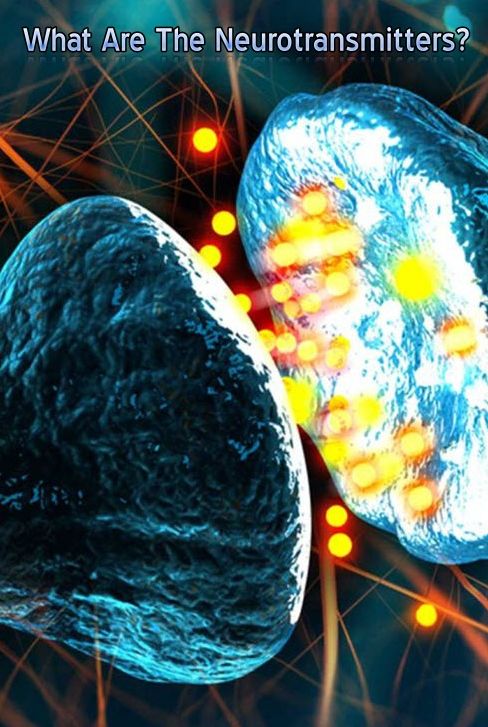
What Is An Action Potential?
An action potential is an all-or-none event. In other words, if the threshold is not reached, the neuron will not fire. But if the threshold is reached, the neuron must fire. Neurotransmitters are released from the synaptic vesicles into the synaptic cleft. They are received by receptors of the target cells.
How Many Neurotransmitters Are There?
More neurotransmitters are being discovered all the time. To date, there are over 100 neurotransmitters that we know about. Neurotransmitters are stored in a synapse in the synaptic vesicles and released across the synaptic cleft after which they bind to the receptors of the target cell. Reuptake is when the neurotransmitter is pulled back up into the presynaptic neuron.
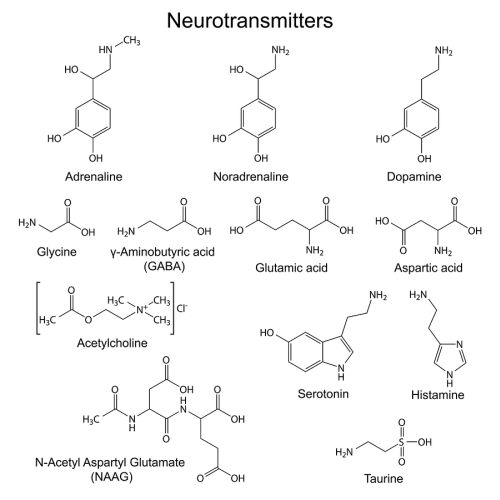
How Were Neurotransmitters Discovered?
Ramon y Cajal (1852 – 1934) is the scientist who discovered the synaptic cleft. Otto Loewi (1873 – 1961) confirmed that neurons communicate by releasing chemicals. Otto Loewi is the one who discovered Acetylcholine (Ach), which makes it the first known neurotransmitter.
What Are The Most Well Known Neurotransmitters?
Neurotransmitters communicate by carrying messages. There are several different types of neurotransmitter classes and they are as follows, along with some of the more well-known neurotransmitters discussed in more detail:
- Amino Acids: These are organic compounds that contain amine (-NH2) and Carboxylic Acid (-COOH). The key elements of amino acids are carbon, hydrogen, oxygen, and nitrogen. They are classified according to their location (alpha, beta, gamma, and delta.) They are the 2nd largest component found in muscles, cells and other tissues, second only to water. Some amino acids are glutamate, aspartate, D-Serine, 4-Aminobutyric Acid (GABA) and glycine. They are important in nutrition.

- Gasotransmitters: These are gaseous signaling molecules. Some include oxygen, carbon dioxide, nitric oxide, carbon monoxide, hydrogen sulfide, nitrous oxide, hydrogen, cyanide, ammonia, methane, hydrogen, and ethylene. They are small molecules of gas and are permeable to membranes.
- Monoamines: Contain one amino group connected to an aromatic ring by 2 carbon chain (-CH2 –CH2). All monoamines are derived from amino acids. They play an important role in emotion, arousal and memory. Drugs that increase them are used to treat depression, anxiety, and schizophrenia. The most well-known monoamines are dopamine (DA), norepinephrine (noradrenaline, NE, NA), epinephrine (adrenalin), histamine, serotonin (SER, 5-HT.)
- Trace Amines: Phenethylamine, N-Methylphenenethylamine, tyramine, 3-iodothyronine, octopamine, tryptamine. Related to monoamine neurotransmitters but in trace concentrates.
- Peptides: Short chains of amino acid monomers. They are linked together by peptide bonds. They are formed by carboxyl group of one amino acid reacts with an amine group of another. There are several classes of peptides, such as milk, ribosomal, nonribosomal, peptones, peptide fragments. Some peptides include somatostatin, substance P, cocaine and amphetamine-regulated transcript, opioid peptides.
- Purines: Purinergic signaling complex – referred to as purinome. Purinergic receptors are among the most abundant. They are found in the circulatory system, the digestive system, endocrine system, immune system, nervous system, renal system, respiratory system, and skeletal system. Acupuncture releases adenosine. Anti-
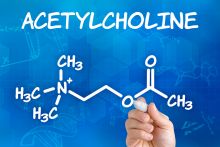 inflammatory drugs cause an accumulation of adenosine. Some purines are adenosine triphosphate (ATP) and adenosine. Others are acetylcholine (Ach), anandamide, zinc, nitric oxide (NO), carbon monoxide (CO), and hydrogen sulfide (H2S).
inflammatory drugs cause an accumulation of adenosine. Some purines are adenosine triphosphate (ATP) and adenosine. Others are acetylcholine (Ach), anandamide, zinc, nitric oxide (NO), carbon monoxide (CO), and hydrogen sulfide (H2S). - Anandamide: Related to joy, bliss, and delight. Found in the CNS and the PNS. They have an immune system function and they also impair the working memory. They are important for implanting the embryo into the uterus. They are at their peak during ovulation and they are related to the “Runner’s High.”
- Glutamate: The most prevalent excitatory neurotransmitter – over 90% of synapses in the human brain. They are found in the excitatory synapses in the brain and spinal cord. When excessive, this can lead to excitotoxicity which can cause cell death, seizures, and strokes. They are correlated with several chronic diseases. These are amino acids used in the biosynthesis of proteins. Their principal role is in neural activation. They are the most abundant excitatory neurotransmitter and play an important role in learning and memory.
- Gamma-Aminobutyric Acid (GABA): Gamma-Aminobutyric Acid (y-Aminobutyric Acid.) 90% of synapses that do not use glutamate. They are fast, inhibitory synapses in the brain. Sedatives enhance GABA. They are inhibitory neurotransmitters in the CNS and they reduce excitability and regulate muscle tone. Chemically, they are considered an amino acid. When channels are open they allow negatively charged chloride ions or positively charged potassium ions.
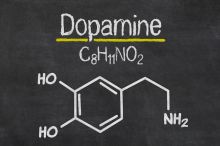
- Glycine: An inhibitory transmitter of the spinal cord.
- Acetylcholine: The first neurotransmitter discovered. It activates skeletal muscles in the somatic nervous system which may excite or inhibit. They have two main classes – Nicotine and Muscarinic. They are cholinergic in nature and are used at the neuromuscular junction, which means they are chemicals that motor neurons release to activate muscles. They have an important role in arousal, attention, and motivation. Used in the Parasympathetic Nervous System.
- Dopamine: Has a number of important functions. They regulate motor behavior and are most noted for being related to pleasure, motivation and emotional arousal. They play a critical role in the reward system of the Brain. People with Parkinson’s suffer from low levels of dopamine and people with Schizophrenia suffer from high levels. Dopamine pathways are the pathways that transmit dopamine. Reward increases dopamine. Associated with most addictive drugs. It inhibits norepinephrine and acts as a vasodilator which widens blood vessels. Dopamine is related to several diseases and disorders. Antipsychotic Drugs are antagonists that reduce dopamine levels (schizophrenics.)
- Serotonin: 5-Hydroxytryptamine (5HT). This is a monoamine Neurotransmitter that is produced and found in the intestines 90% of the time. The rest are in CNS neurons. It regulates appetite, sleep, memory, learning, temperature, mood, behavior, muscle contraction, and the function of the cardiovascular and endocrine system. Serotonin contributes to feelings of well-being and happiness. Related to depression, anxiety, and social phobia.

- Norepinephrine: Focus on CNS. Related to sleep patterns, focus, and alertness. It is noradrenaline (NA) alongside the kidneys and released into the bloodstream from the adrenal glands. Its function is to mobilize the brain and body for action. It has very low levels during sleep. It is high when awake. It is related to stress and danger (very high.) It is related to Fight or Flight. It increases arousal, alertness, increases restlessness, anxiety, heart rate, blood pressure, releases glucose and increases blood flow to the skeletal muscles. Beta Blockers counter the effect of norepinephrine.
- Epinephrine: Adrenaline. Controls the adrenal glands. Plays a role in sleep and alertness. It is often used as a medication and hormone. It is produced by the adrenal glands and plays an important role in Fight or Flight. It increases blood flow to muscles and is used to treat asthma. The major emotion related to epinephrine is fear. It also enhances long term memory.
- Histamine: Works with the CNS, most specifically in the hypothalamus. It is an immune system response and it increases white blood cell activity. It plays a role in fighting pathogens and infections.
So Why Are Neurotransmitters Important?
Neurotransmitters carry out all functions of life! Most all diseases, illness and emotional disorders stem from a neurotransmitter imbalance. There are two main reasons for this. One of them is stress and the other is an addiction.
Neurotransmitters, Stress & Addiction:
Chronic Stress is a primary contributor to neurotransmitter imbalance. For example, being under chronic stress with your job or a relationship forces the body to put out large amounts of neurotransmitters to cope. Over time, this wears on the nervous system and causes depletion.
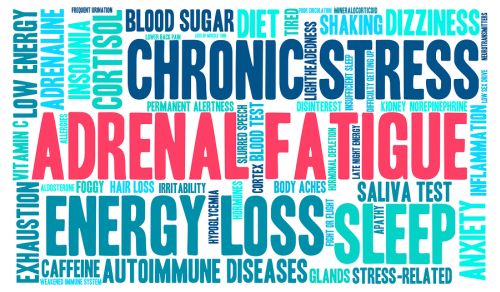
Addictive drugs such as cocaine and amphetamines affect mainly the dopamine system. Addictive opiate drugs affect mostly the opioid peptides which regulate dopamine levels as well. Psychoactive drugs also greatly alter the neurotransmitter systems.
Drugs that prevent neurotransmitters from binding to the receptors are called antagonists. Drugs that cause the neurotransmitter to bind to the receptor (mimicking a normal neurotransmitter) is called an agonist. Some examples of agonists would be valium and benzodiazepines.
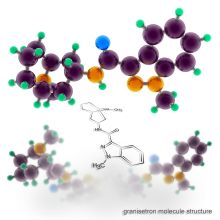
This website will be talking a lot about emotions and addictions, so that is why a basic understanding of neurotransmitters is important for the foundation of this blog. The bottom line is that we want to know how to keep those neurotransmitters in balance so that we can FEEL better!
I find neurotransmitters to be incredibly interesting and inspirational! Who knew they were communicating with each other and working so hard on your behalf? Do neurotransmitters inspire you? If so, please feel free to comment below. All comments are greatly appreciated!

